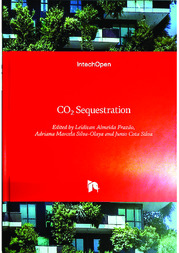Strategic management of grazing grassland systems to maintain and increase organic carbon in soils.
Strategic management of grazing grassland systems to maintain and increase organic carbon in soils.
Autoria: KHALIL, M. I.; FRANCAVIGLIA, R.; HENRY, B.; KLUMPP, K.; KONCZ, P.; LLORENTE, M.; MADARI, B. E.; MUÑOZ-ROJAS, M.; NERGER, R.
Resumo: Understanding management-induced C sequestration potential in soils under agriculture, forestry, and other land use systems and their quantification to offset increasing greenhouse gases are of global concern. This chapter reviews management-induced changes in C storage in soils of grazing grassland systems, their impacts on ecosystem functions, and their adaptability and needs of protection across socio-economic and cultural settings. In general, improved management of grassland/pasture such as manuring/slurry application, liming and rotational grazing, and low to medium livestock units could sequester C more than under high intensity grazing conditions. Converting cultivated land to pasture, restoration of degraded land, and maximizing pasture phases in mixed-cropping, pasture with mixed-livestock, integrated forestry-pasturage of livestock (silvopastoral) and crop-forestry-pasturage of livestock (agro-silvopastoral) systems could also maintain and enhance soil organic C density (SOCp). In areas receiving low precipitation and having high erodibility, grazing exclusion might restore degraded grasslands and increase SOCp. Yet, optimizing C sequestration rates, sowing of more productive grass varieties, judicial inorganic and organic fertilization, rotational grazing, and other climate-resilient approaches could improve overall farm productivity and profitability and attain sustainability in livestock farming systems.
Ano de publicação: 2020
Tipo de publicação: Parte de livro (capítulos de livros, trabalhos e resumos publicados em anais ou em coletâneas)
Unidade: Embrapa Arroz e Feijão
Palavras-chave: Carbono
Observações
1 - Por padrão são exibidas publicações dos últimos 20 anos. Para encontrar publicações mais antigas, configure o filtro ano de publicação, colocando o ano a partir do qual você deseja encontrar publicações. O filtro está na coluna da esquerda na busca acima.
2 - Para ler algumas publicações da Embrapa (apenas as que estão em formato ePub), é necessário ter, no celular ou computador, um desses softwares gratuitos. Sistemas Android: Google Play Livros; IOS: iBooks; Windows e Linux: software Calibre.
Acesse outras publicações
Acesse a Base de Dados da Pesquisa Agropecuária (BDPA) para consultar o acervo completo das bibliotecas da Embrapa.

